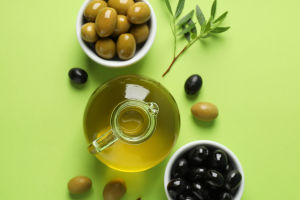Among the poultry we raise, chickens are a very large family, and this family includes not only black chickens, mountain chickens, and native chickens, but also our most common pheasants.
So what is the difference between these chickens, and is a pheasant a pheasant or not?
Although the species are different, they all have a common ancestor, and what we call pheasants in our daily lives are actually pheasants, but with different names.
While the pheasant is supposed to be distantly related to the earth chicken and the crowing fowl in blood relations, the earth chicken and the crowing fowl are close relatives.
The common domestic chicken has only been domesticated by humans as food for people to eat in large quantities, and the ecological environment generated by these species of chickens is different.
For example, the most common pheasant in the countryside has the scientific name branch pheasant and belongs to the bird class chicken-shaped pheasant family pheasant genus.
In other words, the pheasant and our common domestic chicken and the pheasant, etc. belong to the same family of different genera of animals.
Some netizens say: "In fact, the pheasant is the ancestor of the domestic chicken, through the domestication of pheasant, gradually become domestic chicken".
In fact, this understanding is wrong, because the domestic chicken is not domesticated from the pheasant, but from the pheasant family under the genus Protochorus, Protochorus, and pheasant they are the same family and different genera of birds.
In zoology, pheasant-like animals, also commonly known as pheasants, reach a weight of 1-1.5 kg compared to other breeds of chickens, and have lustrous, bright feathers with dark brown between the horizontal lines and a purple-green neck.
Visually, pheasants are smaller in embodiment than domestic chickens, but their overall body shape is longer than domestic chickens because their tail feathers are very long.
Pheasants are very widely distributed, mainly on the Asian continent. For example, they are found in fields and swamps, prefer to nest in bushes and grasses, and are highly concealed.
Pheasant nests are usually quite simple, mostly in the shape of a bowl, with some licorice and leaves and some feathers inside.
Next, we describe their habits.
Males are acting alone or in small groups, while females and their chicks occasionally flock together with other birds.
They inhabit open woodlands, shrublands, semi-deserts, and agricultural lands at different altitudes.
Pheasants can be found in hills and grasslands at low altitudes to mountains at altitudes of up to 3,000 meters, except in places with severe temperatures at the North and South Poles.
In the wild, pheasants migrate vertically only in a small area with the change of seasons.
In summer, pheasants roost in bushes at the edges of mixed coniferous and broad-leaved forests at higher altitudes, and after autumn, they migrate to sheltered and sunny places in lower mountains, foothill grasslands, and cultivated areas on the mountainsides.
All these show that pheasants are resistant to high temperatures and cold, and are more adaptable to environmental temperatures.
This characteristic also makes captive breeding of pheasants easy and successful.
In the wild, it feeds on various insects, snails, earthworms, crops, weeds, tree seeds, and broken young leaves, and likes to eat gravel.
In spring, they like to go to the crop fields and peck at the newly sown grains and seedlings, and after the autumn harvest, they often gather in groups to feed on the cultivated land.
Although the pheasant's food is varied, it has two distinctive features: First, it needs to eat food with high vegetable protein and fat content (such as beans), and the stems and leaves of green plants (grass, wheat seedlings, vegetable leaves, etc.) frequently.
The second is the breeding period like to eat high protein, easy-to-digest insects, both for adult pheasant reproduction, but also conducive to brood rearing.
The newly fledged pheasant chicks are fed on insects.


